Mosaic corydoras - Corydoras haraldschultzi
Scientific name: Corydoras haraldschultzi
Common name: Mosaic corydoras
Family: Callichthyidae
Usual size in fish tanks: 5 - 7 cm (1.97 - 2.76 inch)
014
Recommended pH range: 6.2 - 7.7
Recommended water hardness: 2 - 21°N (35.71 - 375ppm)
0°C 32°F30°C 86°F
Recommended temperature range: 24 - 27 °C (75.2 - 80.6°F)
The way how these fish reproduce: Spawning
Where the species comes from: South America
Temperament to its own species: peaceful
Temperament toward other fish species: peaceful
Usual place in the tank: Bottom levels
Food and Feeding
Mosaic Corydoras (Corydoras haraldschultzi) are omnivores with a preference for a varied diet. They thrive on a base of high-quality flake food or sinking pellets, ensuring that the food reaches the bottom levels where they primarily feed. Supplement their diet with algae wafers to provide additional nutrients. To keep them in peak condition, offer treats of protein-rich live or frozen foods such as bloodworms and brine shrimp twice a week. Feeding them in the evening is ideal, as they are most active during this time. Observing their feeding behavior can help monitor their health, ensuring they receive adequate nutrition in a community setting.
Origin
Native to the freshwater streams and rivers of South America, Mosaic Corydoras are primarily found in the slow-moving waterways of Brazil and Bolivia. Their natural habitats are rich in vegetation and soft substrates, providing ample hiding spots and foraging areas. These conditions help them thrive, and replicating a similar environment in a home aquarium is essential for their well-being. Understanding their origin helps aquarists create a habitat that promotes natural behaviors, such as bottom foraging and social interaction.
Tank Setup and Environment
Mosaic Corydoras are best kept in a tank of at least 60 liters (15 gallons) to accommodate their social nature and need for swimming space. They are bottom dwellers, so a sandy substrate is crucial to protect their delicate barbels from injury. Avoid sharp or coarse substrates, which can damage their sensitive mouthparts. Decorate the tank with driftwood, smooth stones, and plenty of plants like Anubias, Java Fern, Cryptocoryne Wendtii, Vallisneria Spiralis, and Amazon Sword to provide hiding places and replicate their natural environment. These plants are hardy and can thrive in the low to moderate light conditions preferred by Mosaic Corydoras while offering them plenty of cover and comfort.
Maintain the water temperature between 24-27°C (75.2-80.6°F) and a pH range of 6.2-7.7 to suit their preferences. They tolerate a wide range of water hardness, from 2 to 21°N (35.71-375 ppm). Ensure a gentle filtration system to keep the water clean without creating strong currents, as they prefer calm waters. Regular water changes are essential to maintain high water quality and prevent the accumulation of harmful substances. Adding floating plants can help diffuse the light, creating a more subdued environment that mimics their natural habitat.
Sexing
Sexing Mosaic Corydoras can be done by observing their body shape, especially when viewed from above. Mature females are generally larger and have a stockier body shape compared to the slimmer males. These differences become more apparent during the breeding season, as females may appear rounder when carrying eggs. However, the distinctions can be subtle, so it often requires careful observation to accurately identify the sexes.
Breeding
Breeding Mosaic Corydoras in the aquarium setting is challenging and, as of yet, there are no widely reported cases of successful breeding in captivity. In the wild, they are known to be egg scatterers, laying their eggs among vegetation and in secluded areas. To attempt breeding in captivity, provide a well-maintained tank with plenty of hiding spots, a slightly acidic water condition, and soft water. Replicating their natural habitat as closely as possible may encourage spawning behavior. If breeding is successful, the female will scatter eggs, which the male will then fertilize. The eggs typically hatch within a few days, and the fry should be fed with infusoria or other fine foods until they are large enough to accept finely crushed flakes or baby brine shrimp.
Lifespan
The expected lifespan of Mosaic Corydoras is 3-5 years in captivity. Providing them with a well-maintained environment, a balanced diet, and proper tank mates can help them reach the upper end of this range. Regular water changes and maintaining stable water conditions are crucial to preventing stress and disease, which can impact their lifespan.
Short Description
Mosaic Corydoras (Corydoras haraldschultzi) are peaceful, bottom-dwelling catfish known for their intricate patterns and vibrant orange fins. Often confused with Corydoras Sterbai, they are distinguished by the unique pattern of spots on their head. They are social fish and should be kept in small groups of at least six specimens to promote natural behavior and reduce stress. Due to their sensitive barbels, a sandy substrate is essential for their well-being. They make excellent additions to a community tank, coexisting peacefully with other non-aggressive fish. Providing them with a naturalistic environment and a varied diet ensures they thrive and display their best colors and behaviors.
Pictures
Bought by aqua-fish.net from jjphoto.dk.



 Aspidoras
Aspidoras  Giant
Giant  Hognosed
Hognosed  Emerald
Emerald  Cascarudo
Cascarudo  Acre
Acre  Adolfo’s
Adolfo’s  Bronze
Bronze 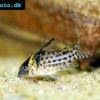 Agassizii’s
Agassizii’s  Spotted
Spotted  Skunk
Skunk  Corydoras
Corydoras 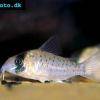 Fairy
Fairy  Corydoras
Corydoras  Pink
Pink 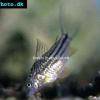 San
San  Bond’s
Bond’s  Spotted
Spotted  Tailspot
Tailspot  Concolor
Concolor  Cope’s
Cope’s 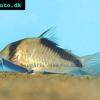 Sand’s
Sand’s  False
False  False
False 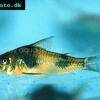 Ehrhardt’s
Ehrhardt’s  Elegant
Elegant 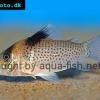 Saddle
Saddle  Fowler’s
Fowler’s  Gomezi
Gomezi 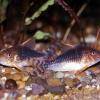 Palespotted
Palespotted 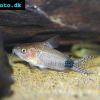 Guapore
Guapore  Dainty
Dainty  Imitator
Imitator  Julii
Julii  Leopard
Leopard 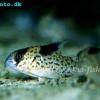 Black
Black  Slant-bar
Slant-bar  Bluespotted
Bluespotted  False
False  Bandit
Bandit  Mini
Mini 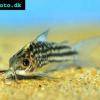 Napo
Napo  Corydoras
Corydoras 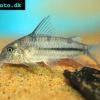 Blue
Blue  Nijssen’s
Nijssen’s 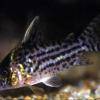 Ornate
Ornate  Peppered
Peppered  Panda
Panda  Albertini
Albertini  Pastaza
Pastaza  Corydoras
Corydoras  Many-spotted
Many-spotted  Pretty
Pretty  Dwarf
Dwarf  Iridescent
Iridescent  Reticulated
Reticulated 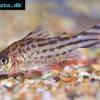 Bannertail
Bannertail  Robust
Robust  Schwartz’s
Schwartz’s  Black
Black 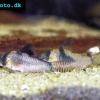 Longnosed
Longnosed  Seuss’
Seuss’  Smudge
Smudge  Masquerade
Masquerade 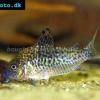 False
False  Millenium
Millenium  Pinkthroat
Pinkthroat  Sterba’s
Sterba’s  Longsnout
Longsnout  False
False  Miguelito
Miguelito 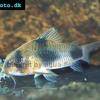 Twosaddle
Twosaddle  Xingu
Xingu 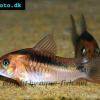 Black
Black  Porthole
Porthole  Flagtail
Flagtail  Brown
Brown  Spotted
Spotted